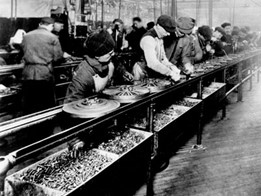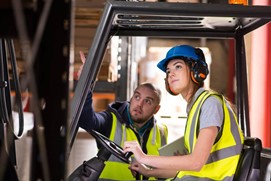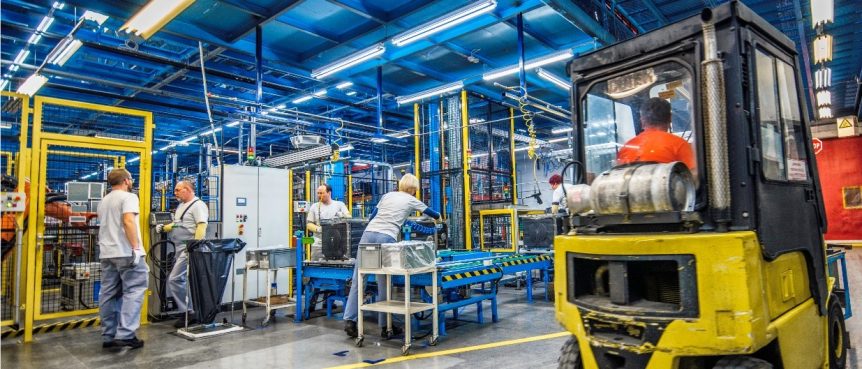 Workplace Hazards
Workplace Hazards
Safety in the workplace has been an important factor since the Flint 1936 strike, with emphasis in the 1970’s. While we have seen vast improvement of working conditions, it is not something that is finished. Processes change and so should our safety practices. Workplace injuries can not only affect the lives of employees, but also the revenue, quality, and customers of a company (Smentowski, 2017). Not only this, but with the current economy, we should expect to see changes in aspects such as safety. It is important to recognize these changes and prepare for the future.
In the automotive industry, there are a vast array of workplace hazards. Due to the environment, many issues can occur due to manual handling (bending, reaching, pulling, lifting or overexertion), being hit or trapped between objects and other events such as slips, trips, falls, loud noises, vibrations, chemical and fire exposures (ASK-EHS, 2019). According to BLS (Basic Life Support); Transportation, warehousing, and manufacturing were ranked at the top of the list for highest number of workplace injuries. This is not just a coincidence. Lots of moving parts and complex systems can lead to potential workplace hazards.
Economy Plays a Part
Not only does the industries setting lead to a higher chance of injury, but so does the current economy. A research study conducted by Tanya Jenke supported that injury rates increased when the economy was growing, contrary to what most would think. As more people are being employed, the higher the number of workers facing risk. Even though more workers lead to less overexertion and time constraints, an increased hiring of unskilled workers can also lead to improper maintenance or training that can lead to possible harm (Baldry, 2021). With increasing employment, ensuring proper safety measures are taken when on the job is becoming more vital.
 What Can We Do?
What Can We Do?
PPE or Personal Protective Equipment are a great tool to prevent these injuries from happening, however, they aren’t always enough. Making sure other key safety features are in place such as proper ventilation, protective barriers between machinery and sound proofing can all be used to further protect against these risks (Safety, O. R. R., 2021). While it is important that these safety features are used, injuries can still happen.
On top of ensuring the right PPE and safety features are utilized, there are other ways to reduce the chances of injuries. The first and most important step is to identify your risk. What are the potential hazards? What PPE is required to sufficiently protect the employee? Once the risk is identified, employees can then be trained to protect against these risks.
Next, make sure the PPE appropriately fits for all employees and nothing else is preventing them from doing their job safety. The wrong size PPE could also lead to a workplace injury. The employee should not be wearing any accessories that could restrict them or get caught on something. Now, identify any safety features on machinery and power tools that are going to be used. And last, but most importantly, stay alert. In this industry, it is easy to fall into autopilot and focus your thoughts on something else (Patraju, 2021). Staying present in the work can make a huge difference in preventing an injury from occurring.
 Other Safety Measures
Other Safety Measures
As safe as we can possibly be, injuries are still going to happen. It is important to analyze when they do and trace back to the reason it occurred in the first place (Safety practices in the automotive industry, 2021). Having access to report issues employees cannot resolve themselves is important (Baldry, 2021). Making sure strong safety systems are in place to detect and manage risk is key. It is best if employees are able to see real-time data to identify risks and support good decision making. Receiving data from all machines and people at every level and every location is ideal (Smentowski, 2017). From there, a risk assessment can be executed.
Producing a risk assessment can help pinpoint increased hazards in certain areas. With this information, new safety measures can be implemented. Not only is it important to consistently update these practices, but it is also beneficial to continue to analyze the new practices to see if they work and improve upon them (Safety practices in the automotive industry, 2021). This way, the best possible safety system is being used.
Sources:
ASK-EHS. (2019, June 25). Occupation Health and Safety-Automotive Industry. Ask Environment Health and Safety.
Baldry, S. (2021, April 7). Automotive industry safety performance: 4 tips to improve. Cority.
Patraju, K. (2021, January 7). Top 5 safety tips for the AUTOMOTIVE Workplace. Ansell Catalogue.
Safety practices in the automotive industry. ProcessMAP. (2021, August 3).
Safety, O. R. R. (2021). Experts in Protecting the Automotive Manufacturing Industry. Enhancing Automotive Manufacturing Safety .
Smentowski, L. (2017, November 1). Risk Management in Automotive Manufacturing: Stop Problems at Their Roots. StackPath.
